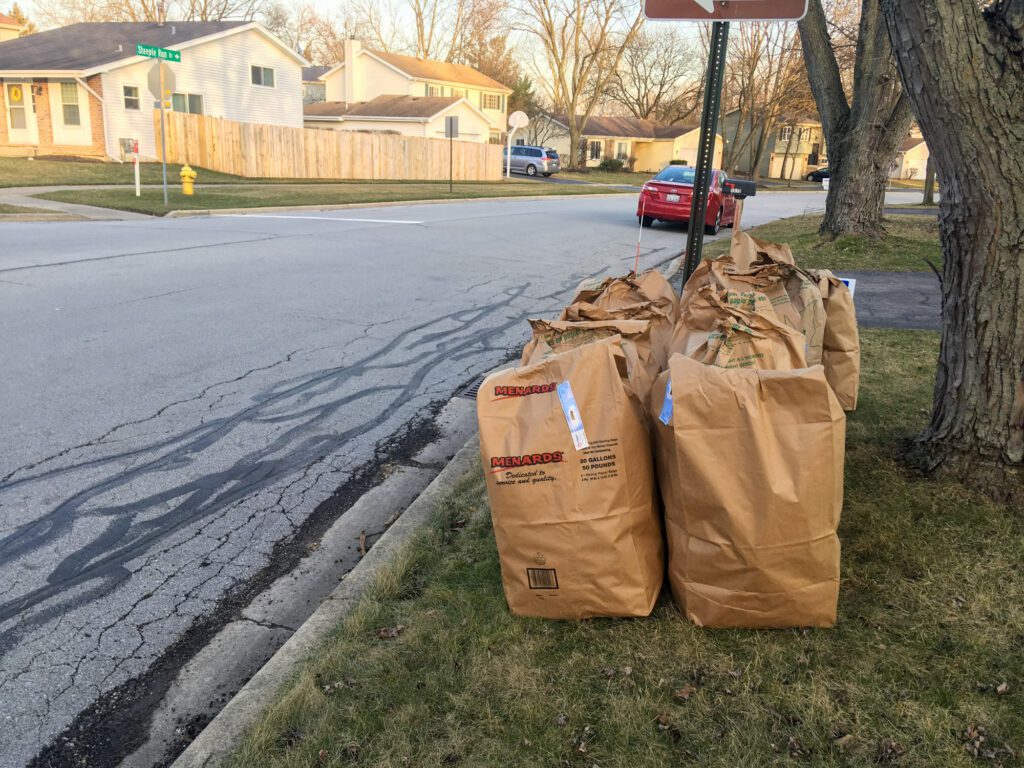Leaves are a big topic of research when it comes to water quality issues coming from residential neighborhoods in the fall. Rainwater leaches nutrients from leaves lying in the street, creating a kind of “leaf tea.” The nutrient-rich leaf tea then flows down storm drains and into local streams. The nutrients from leaves, especially phosphorous, cause algal blooms that lower oxygen levels in the stream–less oxygen makes it harder for fish and aquatic insects to live there.
The U.S. Geological Survey (USGS) and the City of Madison have been working together for more than five years to study the impact of fall leaves on water quality in the Madison area, as well as how different leaf collection practices can reduce those impacts. This work is relevant to our area because we share similar weather patterns, development practices and residential tree species.
Study Results: Removing Leaves from Streets is Key to Protecting Streams
Leaves have a greater impact on waterways than you might think. During autumn, leaf litter and other organic debris can account for 56% of the ANNUAL total phosphorus load in urban stormwater. That is over half the amount of phosphorus in urban stormwater for an entire year coming into the stream system in just six to eight weeks!
Fortunately, the 2016 study in Madison by the USGS showed that removing leaves from the street before it rains could reduce the amount of phosphorus reaching streams from residential neighborhoods by 80%. The study proves municipal leaf collection and street cleaning can be extremely effective in preserving the health of local streams.

There have been a number of follow-up studies that have looked at how different leaf pick-up practices could reduce the amount of phosphorus leaching into stormwater. These projects included help from residents and volunteers as well as City of Madison staff. Initially, they compared picking up all leaves on a street before a rain – every last one–to just their regular pick-up practices. A group of UW Madison students photographed streets and then collected and weighed leaves to come up with a visual way to estimate how many leaves were on a street.
There are other projects investigating whether or not different species of trees release different amounts of phosphorus. All of this information will be helpful in customizing a leaf pick-up program that maximizes phosphorus reductions while staying within available staffing resources. An example of this might be increasing pick-ups and street sweeping in older neighborhoods that have more trees instead of the same schedule across a community.
The Bottom Line
Leaf collection and street cleaning dramatically decrease the nutrients (in this case, phosphorus) entering local rivers and streams. Street cleaning is most effective if done right before a storm. This prevents the rainwater from washing leaves on the street into storm drains that lead directly to rivers.
What Can You Do?
As residents you can do your part too. Look for ways to use leaves at home – mulch flower beds or around trees, add to your compost pile, mulch with mower and make leaf mold to add to your garden next year. If you can’t find a way to use all of your leaves and need to put them out for collection, keep them out of the street. If you have a storm sewer inlet in front of your house, be sure to keep it clear of leaves and other debris.

More tips and instructions for making leaf mold, or partially decomposed leaves you can add to your garden to retain moisture in the soil, can be found at




